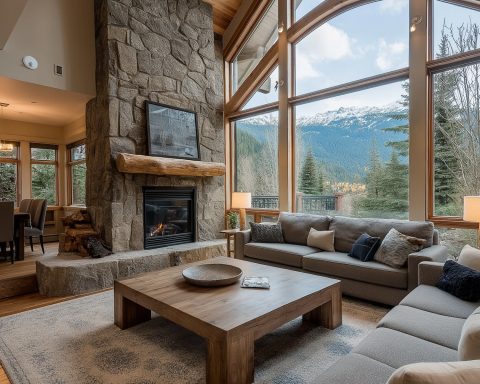- Record-High Home Prices & Low Inventory: Anchorage’s housing market is in a severe supply crunch. The average single-family home price surged ~26% from 2019 to 2023 (from $389k to $491k) adn.com, and by mid-2025 the median sale price hovers around the mid-$400,000s – a record high. Only about 133 single-family homes were on the market in early 2025 (under 1 month of inventory), reflecting historically low supply connieyoshimura.com connieyoshimura.com. Homes are selling in mere days, often at or above asking price.
- Housing Sales & Affordability Crunch: High mortgage rates (~6–7%) and limited listings have slightly dampened sales volumes (down ~4–5% year-over-year) connieyoshimura.com, but demand still outstrips supply. Anchorage housing in 2023 was the least affordable in two decades adn.com adn.com. First-time buyers struggle as affordability index hit ~1.8 (meaning two average incomes are needed to afford one average home) – a sharp reversal from the easy-money years of 2020-21 adn.com adn.com. Many homeowners locked into 3% rates are “rate locked” and not selling, further limiting inventory adn.com.
- Residential Construction & Policy Changes: New home construction in Anchorage remains sluggish due to high costs – building expenses jumped ~35% post-pandemic connieyoshimura.com and virtually all materials are imported, driving up prices. Only 14 new construction homes featured in the 2025 Spring Preview, nearly all priced above $500k connieyoshimura.com. In response, officials are enacting bold measures. In mid-2024 the city ended single-family-only zoning, allowing duplexes on former single-family lots to increase density adn.com. In 2025, a new ordinance (AO 2025-35) was introduced to give tax breaks for new housing developments (8+ units), aiming to spur apartment construction and add 10,000 housing units in 10 years alaskasnewssource.com alaskasnewssource.com. The Alaska Housing Finance Corp. is also offering incentives (e.g. a $10,000 rebate for new homes started in 2025) to boost building connieyoshimura.com. These policy changes are meant to jump-start development and address the housing shortage.
- Soaring Rents & Low Vacancies: Anchorage’s rental market is extremely tight. The median rent hit $1,375 in 2024 – a 7.8% jump from $1,275 the year prior adn.com – after double-digit rent spikes in 2022. Vacancy rates remain very low around 4–5% live.laborstats.alaska.gov (even under 2% in the most desirable apartments ingramalaska.com), indicating that nearly all rentals are occupied. Would-be homebuyers are stuck renting longer, and a surge of short-term rentals plus slow construction have further squeezed supply adn.com. New multifamily projects (e.g. by Cook Inlet Housing Authority and private developers) are in the pipeline, but not enough units are coming online to meet demand. The city’s new tax-abatement program for apartment projects is directly aimed at overcoming developers’ “math problem” – high building costs that previously made new apartments infeasible alaskasnewssource.com. Until significant new inventory arrives, renters face continued rent hikes and competition for units.
- Commercial Real Estate – Retail & Office: Anchorage’s commercial property sector is a mixed bag in 2025. Retail real estate is relatively healthy – consumer spending rebounded with a strong tourism season, and service and experiential businesses are driving demand ingramalaska.com. Retail vacancy is in the low single digits (~5% or less) ingramalaska.com, and prime shopping locations often see multiple tenants competing. South Anchorage in particular is seeing new retail development and renovations, while downtown retail is gradually recovering with initiatives to revitalize the 4th Avenue corridor ingramalaska.com ingramalaska.com. The office market is still stabilizing post-pandemic. Citywide office vacancy hovers around 10–12%, an improvement from 2024 ingramalaska.com as some empty offices have been absorbed. Demand is bifurcated: Class A offices (modern, high-quality space) enjoy steady leasing and even positive net absorption, with average Class A rents about $2.75–$3.25 per sq. ft. per month (full-service) ingramalaska.com. In contrast, older Class B/C office buildings struggle with higher vacancy and need to offer discounts and concessions ingramalaska.com. Many businesses have downsized space due to hybrid work, so tenants now favor efficient, well-located offices of moderate size (3,000–6,000 sq. ft.) ingramalaska.com. No new office towers are being built, but adaptive reuse is a trend – for example, one aging downtown office building was refurbished into modern offices (anchored by an oil company tenant) adn.com. Overall, Anchorage’s office outlook is cautiously optimistic: vacancy is edging down and no glut of new supply is on the horizon, so the existing quality spaces should lease up as the economy grows.
- Industrial Real Estate – Hot Market: The industrial sector in Anchorage is booming. Warehouse, logistics, and industrial properties have ultra-low vacancy (often below 3%, with mid-2025 reports showing <1% vacancy for modern space) ingramalaska.com – among the tightest industrial markets in the nation. Demand is sky-high thanks to Anchorage’s role as a logistics hub (Ted Stevens Anchorage International Airport is a major air cargo nexus, and the Port of Alaska handles most inbound freight for the state). Companies in freight, construction trades, and energy support are scrambling for warehouses and yard space. This has driven industrial lease rates to record highs – new high-clearance warehouses command about $1.35–$1.65 per sq. ft. per month (NNN) ingramalaska.com, and even older industrial facilities are seeing rent growth. With such low vacancy, investors are eager to acquire industrial assets, pushing property values up and cap rates down (industrial real estate is one of Anchorage’s best-performing asset classes) ingramalaska.com. New construction in this segment has been limited (due to land constraints and high building costs), but there is notable activity near the airport – some build-to-suit warehouse projects and an expansion of logistics facilities ingramalaska.com. Still, any new supply is immediately absorbed. Industrial space remains at a premium, a trend likely to continue barring a major economic shift.
- Notable Developments & Infrastructure: After years of little growth, Anchorage is seeing a few major developments. In downtown, a $300 million mixed-use redevelopment of an entire block (the old 4th Avenue Theatre site, “Block 41”) broke ground in 2025 adn.com adn.com. It will include a multi-story parking garage podium with retail, topped by new housing or hotel units – part of an effort to revitalize downtown with more 24/7 activity. The developer already remodeled an adjacent office tower as part of this project adn.com adn.com. Elsewhere, the city is investing in infrastructure with funding from the federal Infrastructure Act – road improvements, port upgrades, and broadband expansion – which are pumping money into the construction sector alaskapublic.org alaskapublic.org. A tight construction labor market (construction employment jumped 9% in 2024 and is set to grow another 7% in 2025) alaskapublic.org alaskapublic.org has resulted, with some workers coming from out of state to fill the gap. These infrastructure and construction projects, while mostly public-sector, bolster the economy and indirectly support real estate (by improving utility capacity, transportation, and job growth).
- Economic & Demographic Drivers: The broader economic context is mixed for Anchorage real estate. On one hand, 2025 economic growth is solid – Anchorage is adding an estimated 2,300 jobs (+1.5%), led by gains in healthcare, tourism, and construction alaskapublic.org alaskapublic.org. Big oil projects on the North Slope (e.g. Willow and Pikka) are boosting demand for engineering and support services based in Anchorage alaskapublic.org, which helps the office market. The military presence (JBER base) and government jobs remain steady anchors. On the other hand, population growth has stalled – Anchorage has experienced 10 consecutive years of net out-migration alaskapublic.org. The city’s working-age population has declined by ~19,000 people (6%) since 2013 alaskapublic.org as many residents left for opportunities elsewhere or moved to cheaper areas like the Mat-Su Valley. This demographic stagnation tempers long-term housing demand: absent new migrants, much of the real estate demand comes from locals (e.g. renters trying to become owners, or families needing larger homes). The Mat-Su Valley just north of Anchorage continues to attract those seeking affordable homes – its average house price ($437k) is lower and property taxes are dramatically less than Anchorage’s connieyoshimura.com connieyoshimura.com. In fact, over 50% of all new Alaska single-family home construction in 2022 happened in the Mat-Su Borough connieyoshimura.com, underscoring how suburban growth is outpacing Anchorage. Anchorage’s housing crisis – characterized by high costs and low supply – has become a top political issue, spurring the city to pursue pro-housing policies to retain residents. The outcome of this tug-of-war (jobs and amenities in Anchorage vs. cheaper housing outside) will influence the real estate market trajectory through 2030.
Outlook and Opportunities Through 2030
Residential Market: The next 5+ years will be critical in determining whether Anchorage’s housing crunch eases or persists. Home prices are expected to remain high and likely continue a gradual rise into the late 2020s, though not at the explosive rate seen during 2020-2023. Economic forecasters predict prices may level off or only modestly dip in the near term (a significant decline is not anticipated barring a major event) adn.com. Interest rates will be a key factor – if mortgage rates fall into the 5% range by 2026–2027, Anchorage could see a surge of pent-up buyer demand release, increasing sales volume. However, any boost in demand without new supply will put upward pressure on prices again. The city’s push to add housing (via zoning reform and tax incentives) could gradually bear fruit by late this decade: we may see a wave of new duplexes, townhomes, and mid-size apartment buildings by 2030. If the ambitious “10,000 homes in 10 years” plan even comes halfway to fruition, that would markedly increase inventory. More new construction – especially of condos, apartments, and smaller single-family homes – would help balance the market, slowing price and rent growth to more sustainable levels. Still, given construction costs and labor challenges, housing supply will take years to catch up. For homebuyers, this means competition should remain fierce in the short term, but there may be more choice by the late 2020s as new projects complete and some aging baby boomers downsize (potentially freeing up higher-end homes for sale). Buyers should stay prepared with financing, and watch for first-time buyer assistance programs (Alaska agencies are considering down-payment grants up to $25k) connieyoshimura.com. If you’re a buyer, the opportunity may improve by 2027–2030: slightly lower interest rates and slowly growing inventory could make the market a bit more accessible than the frenzied 2023-2025 period.
Rental Housing: For renters, relief may be gradual. Rents will likely keep rising in the next couple of years, albeit at a moderating pace if the economy stays stable – think annual rent increases in the mid single-digits rather than the 7–14% jumps recently seen adn.com. Vacancy rates are forecast to remain very low through at least 2026, so renters will still need to compete and budget carefully. By the late 2020s, however, the combination of new apartment construction and more residents transitioning to homeownership (if interest rates ease) could increase rental vacancy modestly. That would be good news for renters, potentially slowing rent growth by 2030. The opportunity for renters is that Anchorage’s leadership is heavily focused on housing – so new developments could bring more choices in coming years, and programs to incentivize rental construction (or to convert under-used commercial buildings to residential) might expand the supply of apartments. Renters should keep an eye out for new communities offering move-in incentives as the market loosens slightly toward 2030. For those considering buying, the next few years might present a window if home price growth plateaus and new starter homes or condos hit the market as intended by city plans.
Commercial & Industrial Real Estate: Investors and developers will find different prospects across property types. Industrial real estate will likely remain a star performer. Given Anchorage’s strategic logistics role, demand for warehouse and industrial space is secularly strong. Through 2030, even with some new facilities built, expect industrial vacancies to stay very low (perhaps 2–4% at best) and rents to stay elevated. Investors can benefit from stable cash flow and appreciation in this sector – though finding available properties to buy will be a challenge in itself. Developers who can build modern warehouses or flex spaces stand to tap into unmet demand; the key obstacles will be finding land and overcoming high construction costs. Any slowdown in global freight could soften the market, but at this point Anchorage’s industrial shortage is so acute that even a moderate dip in demand would still leave the sector tight.
The office sector faces a more cautious outlook. By 2030, office vacancy in Anchorage may gradually trend down into single digits (especially for Class A), but much depends on broader shifts in remote work and government/corporate space needs. We are unlikely to see new speculative office buildings for the foreseeable future; instead, redevelopment will be the theme. Older offices might be repurposed into residential units or mixed-use space if they continue to struggle – an opportunity for creative developers to convert or retrofit properties. Investors in office should focus on well-leased, high-quality buildings or consider bargains in older buildings that can be bought and renovated at a discount. For commercial landlords, retaining tenants through flexibility (upgrades, shorter lease terms, etc.) will be key in the mid-term as companies right-size their footprints.
Retail real estate in Anchorage is poised to remain resilient. Unlike many Lower-48 cities, Anchorage has limited e-commerce alternatives (due to shipping logistics), and local brick-and-mortar stores continue to draw shoppers. Through 2030, retail vacancy is expected to stay relatively low, especially in prime corridors. Neighborhood retail centers offering services, grocery, dining, and entertainment will do well as the population ages in place and as tourism grows. Developers might find opportunity in building or renovating retail space in growing neighborhoods (e.g. the South Anchorage area) and in revamping downtown’s retail mix to cater to tourists and residents. That said, any new retail project should be carefully tailored – experiential and service-oriented tenants are the future, whereas big-box expansions will be limited. Investors in retail properties can expect steady cap rates and income, but should favor diversified tenant mix and internet-resistant uses.
Opportunities for Different Stakeholders: Across the board, Anchorage’s real estate market through 2030 will reward those who can navigate the supply-demand imbalance.
- Homebuyers: Be patient and prepared – the market may slightly improve in your favor later in the decade as new housing initiatives take effect. Take advantage of any buyer assistance and stay open to alternatives (townhomes, condos, or homes in peripheral areas) as starter options, since detached single-family homes will remain pricey.
- Renters: Continue to budget for higher rents in the near term, but watch for new rental communities offering promotions by 2027+. If your goal is to buy, keep an eye on mortgage rate trends; a dip in rates could open a window to purchase your first home before prices climb further.
- Investors: The best prospects lie in income-producing residential and industrial properties. Multifamily apartment investments should perform well – low vacancies and rising rents boost returns, and any dip in homeownership rates means more renters. Industrial/logistics facilities are effectively “gold dust” – high demand and scant supply will drive value. Retail can be solid for investors if focused on essential services or prime tourist areas. Office is more speculative – opportunities may come in picking up distressed office assets and repositioning them, but require caution and capital for upgrades. Overall, Anchorage’s high occupancy rates in most sectors mean landlords have leverage to increase rents and achieve strong yields.
- Developers & Builders: The coming years present a pivotal chance to shape Anchorage’s future. There is pent-up demand for almost every type of housing – from affordable starter homes and senior-friendly condos to market-rate apartments. With new tax incentives and political will behind housing, developers who can innovate to reduce construction costs (smaller unit sizes, modular construction, public-private partnerships, etc.) will find eager buyers and renters for their projects. Look to infill sites and under-utilized parcels, as the municipality is signaling flexibility on zoning and infrastructure support to encourage development connieyoshimura.com alaskasnewssource.com. Industrial development is another high-need area – any addition to warehouse stock will likely lease up immediately, and there may be opportunities in areas near the port or airport for land acquisition and build-out. Keep in mind the challenges: labor shortages, expensive materials, and lengthy permitting processes are real constraints. But the upside of meeting Anchorage’s unmet demand is significant by 2030. In short, developers who “get creative” (to quote Mayor LaFrance alaskasnewssource.com) and seize new incentive programs could help alleviate the housing crisis and reap rewards in a supply-starved market.
Bottom Line: Anchorage’s real estate landscape in 2025 is defined by scarcity and high costs – a tight market across residential, rental, and industrial sectors. Looking ahead to 2030, the city is at a turning point. If current economic momentum continues and bold housing initiatives succeed, Anchorage could see a moderate increase in inventory and a stabilization of prices and rents by the end of the decade. That would gradually shift the market closer to balance, easing the burden on homebuyers and renters. If development efforts falter, however, the existing housing shortfall and growing maintenance needs of an aging housing stock could keep pressure high, ensuring that well-located properties remain in high demand and high value. For now, all signs point to opportunity for those who can build or invest in much-needed housing and logistics space. In a city confronting a housing crunch, the next few years will set the course for Anchorage’s real estate market through 2030, making it an exciting – and pivotal – time for buyers, investors, and developers alike.
Sources: Anchorage Daily News adn.com adn.com adn.com adn.com; Connie Yoshimura, Alaska Realty Blog connieyoshimura.com connieyoshimura.com connieyoshimura.com connieyoshimura.com; Alaska Dept. of Labor/AHFC data live.laborstats.alaska.gov; Anchorage Economic Development Corp./Alaska Public Media alaskapublic.org alaskapublic.org; Ingram Alaska Commercial Real Estate Report Q2 2025 ingramalaska.com ingramalaska.com; KTUU News (Anchorage) alaskasnewssource.com alaskasnewssource.com.










